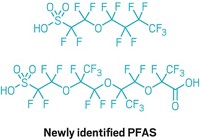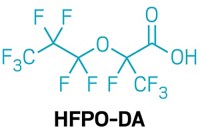Advertisement
Grab your lab coat. Let's get started
Welcome!
Welcome!
Create an account below to get 6 C&EN articles per month, receive newsletters and more - all free.
It seems this is your first time logging in online. Please enter the following information to continue.
As an ACS member you automatically get access to this site. All we need is few more details to create your reading experience.
Not you? Sign in with a different account.
Not you? Sign in with a different account.
ERROR 1
ERROR 1
ERROR 2
ERROR 2
ERROR 2
ERROR 2
ERROR 2
Password and Confirm password must match.
If you have an ACS member number, please enter it here so we can link this account to your membership. (optional)
ERROR 2
ACS values your privacy. By submitting your information, you are gaining access to C&EN and subscribing to our weekly newsletter. We use the information you provide to make your reading experience better, and we will never sell your data to third party members.
Pollution
Comparing modern and archival pine needles shows how PFAS pollution evolves over time
Researchers map dozens of atmospheric PFAS pollutants by analyzing fallen pine needles with advanced mass spectrometry
by Alla Katsnelson, special to C&EN
March 14, 2022

Fallen pine needles may offer a cheap and simple way to monitor the atmosphere for pollution from per- and polyfluoroalkyl substances (PFAS). By running pine needles through a combination of chemical separations and analyses, researchers mapped the presence of more than 70 PFAS in a single region (Environ. Sci. Technol. 2022, DOI: 10.1021/acs.est.1c06483). The results provide a proof of concept for PFAS sampling that doesn’t require continuous air monitoring.
PFAS in the environment has been linked to serious health issues, but monitoring atmospheric PFAS levels is challenging because there are potentially more than 9,000 different PFAS molecules and because air sampling systems are cumbersome and expensive.
Inspired by past work on detecting persistent chemicals in tree bark, Scott Belcher, an environmental scientist at North Carolina State University, and his colleagues, found that atmospheric PFAS sticks especially strongly to pine needles’ waxy cuticles. He and his team collected pine needles in the region and analyzed them using liquid chromatography, ion mobility spectrometry, and mass spectrometry. The technique could distinguish different PFAS from just 20 or so dry, ground-up needles.
The researchers performed the same analysis on pine needles archived by NC State and Duke University going back to 1961, achieving a snapshot of where particular PFAS were most prominent over the past 6 decades.
By using the historical samples, Belcher’s team was able to observe the shift from phased-out PFAS to newer derivatives that are less well studied. For example, the researchers observed remnants of aqueous film-forming foams that came into use by the military in the 1960s. They also observed a rise in levels of fluoroethers produced at a factory that was built in the 1980s. Seeing how the samples track the spatial and temporal distribution of particular PFAS was “jaw-dropping,” Belcher says.





Join the conversation
Contact the reporter
Submit a Letter to the Editor for publication
Engage with us on Twitter